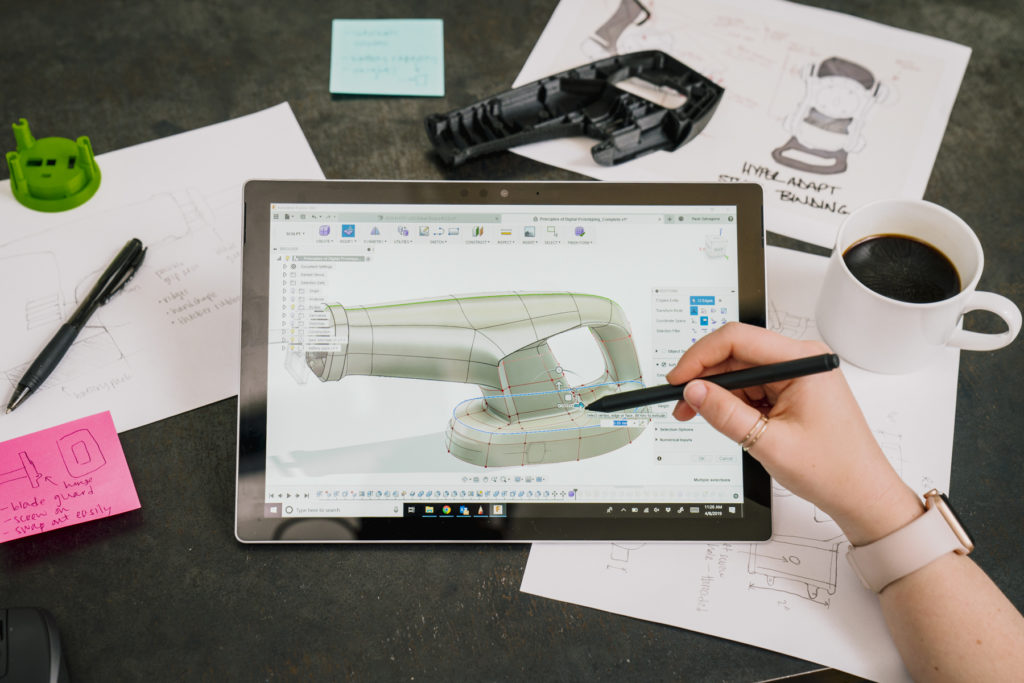Elevate your design and manufacturing processes with Autodesk Fusion
Learn how to design smarter and save time while 3D modeling with the pattern command and timeline rearranging features in Fusion 360.

When it comes to computer-aided design (CAD), efficiency and time-saving strategies are paramount. In this article, we’ll explore two powerful techniques that can speed up your design process and enhance your productivity, based on our Fusion 360 – 15 Tips & Tricks ebook.
Streamline your design process with the Pattern command in Fusion 360
First, let’s dive into the concept of designing once and patterning many times. The key to saving time in CAD is to leverage the Pattern command in Fusion 360 whenever possible. If your design involves recurring features, bodies, or components, you should always consider using patterns or mirrors. This approach not only reduces the time spent on repetitive tasks but also results in a ‘lighter’ file.

Patterns allow you to replicate features or components effortlessly, eliminating the need to recreate them manually. By applying this technique, you can maintain consistency throughout your design and make modifications efficiently. To optimize your design workflow and keep your file light, it’s best to focus on using patterns and features instead of overloading your sketches.
Here’s a video that dives deeper into the pattern capabilities of Fusion 360:
Make use of the timeline’s rearranging function
Now, let’s shift our focus to another powerful aspect 3D modeling in Fusion 360—the timeline’s rearranging function. If you haven’t already taken advantage of the ‘Capture Design History’ function in Fusion 360, you’re missing out.
By enabling this function, the timeline appears at the bottom of your screen, providing a chronological view of your design’s history. This serves as a valuable tool for scrolling back to various points in your design process, allowing you to review and modify your model easily.
One of the most useful powers of the timeline is the ability to drag and drop the order in which features were made. This becomes exceptionally handy when you want to add a feature to a pattern or mirror created earlier in the design process. The timeline empowers you to rearrange features without starting over, saving significant time and effort.

However, it’s essential to be mindful that the parent-child build order plays a crucial role in how your design functions. For instance, if you create a sketch and then use it as a reference for an extrude feature, you cannot simply reposition the extrude in front of the sketch on the timeline. Both the sketch and the extrude feature must move together to maintain the design’s integrity.
To fully optimize the timeline’s potential, it’s advisable to plan your design process thoughtfully. Name key positions on the timeline and organize your features strategically for easy access and modification. Embrace the iterative nature of design and use the timeline to experiment and refine your model until it achieves the desired outcome.
Get started with Fusion 360
Utilizing pattern commands and the timeline’s rearranging functions can significantly improve your CAD efficiency. Designing once and patterning many times allows you to work smarter and faster, keeping your models consistent and reducing redundant work. Moreover, the timeline’s rearranging functions empower you to revise and fine-tune your design without starting from scratch.
As you integrate these techniques into your design workflow, you’ll find yourself saving valuable time, streamlining your processes, and achieving higher levels of productivity in Fusion 360.
Before you get started on your next project, download the Fusion 360 – 15 Tips & Tricks ebook to discover more ways to improve your workflow:
Additional timeline and Pattern command FAQs
- Can I use patterns in both the sketch environment and the feature environment?
Yes, you can use patterns in both environments. - Can I undo changes made using the timeline’s rearranging functions?
Yes, the timeline’s rearranging functions are non-destructive, meaning you can easily undo changes and revert to your design’s previous states. - Is there a limit to the number of features I can add to the timeline?
In general, Fusion 360 can handle a substantial number of features. The exact number may depend on your computer’s hardware capabilities and the complexity of your model. - Can I collaborate with others using the timeline’s rearranging functions?
Yes, the timeline’s rearranging functions can be beneficial for collaboration as it provides a clear history of design changes, making it easier for team members to understand the progress and contribute to the project.